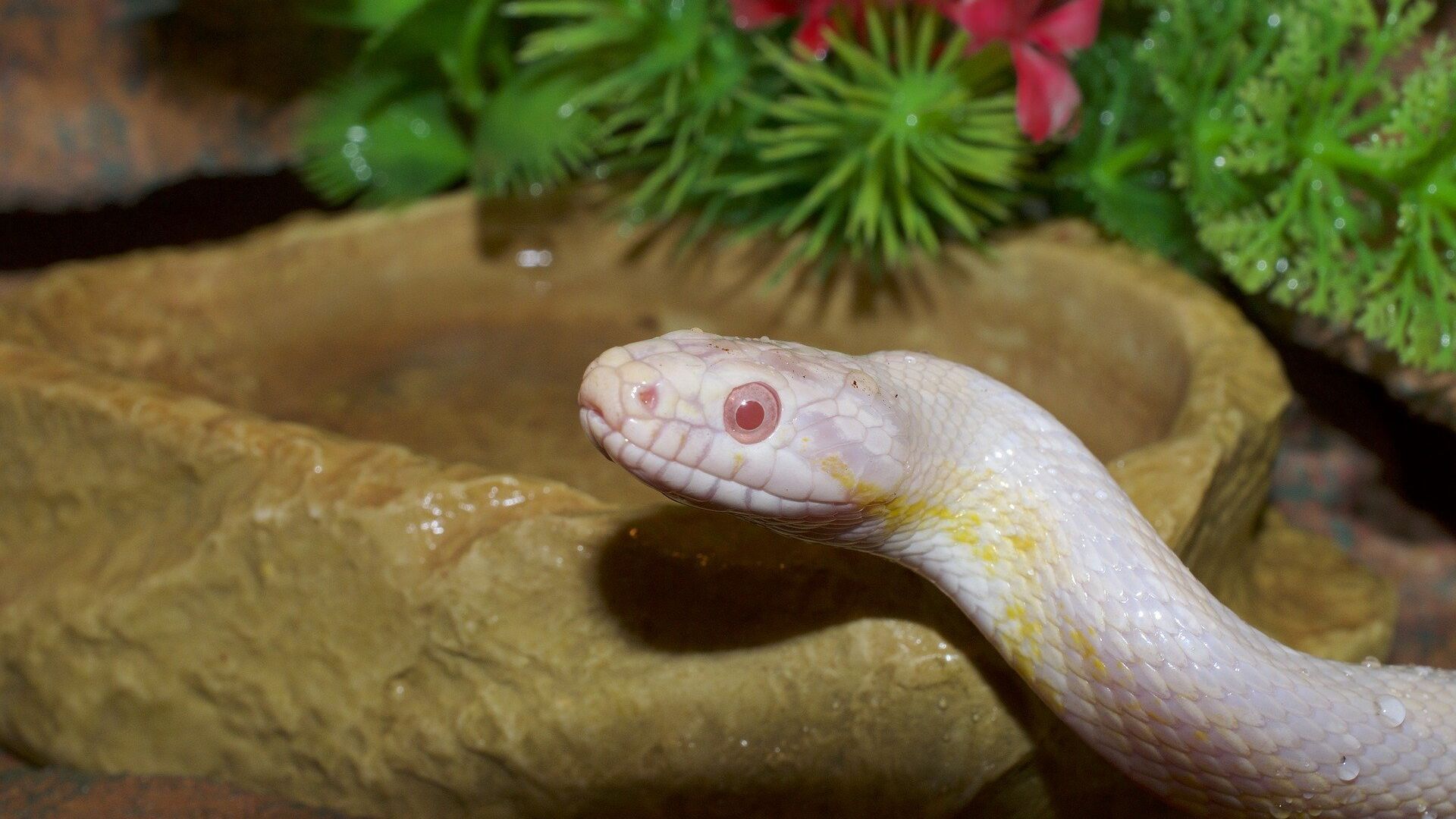https://sputnikglobe.com/20210915/snakes-survival-success-story-how-the-asteroid-that-killed-dinosaurs-gave-way-to-serpents-1089081559.html
Snakes Survival Success Story: How the Asteroid That Killed Dinosaurs Gave Way to Serpents
Snakes Survival Success Story: How the Asteroid That Killed Dinosaurs Gave Way to Serpents
Sputnik International
Snakes owe some of their success to one of Earth’s most devastating moments, the Cretaceous-Paleogene extinction event. The suborder serpentes thrives in all... 15.09.2021, Sputnik International
2021-09-15T01:12+0000
2021-09-15T01:12+0000
2022-08-06T13:32+0000
snakes
evolution
dinosaurs
science & tech
https://cdn1.img.sputnikglobe.com/img/107133/04/1071330479_0:100:1921:1180_1920x0_80_0_0_3e5d9a0e26db5ff8327e332329f79410.jpg
Some 66 million years ago, dinosaurs ruled the Earth but with the sudden impact of a massive asteroid, the reign of the dinos came to an end. What followed was a mass extinction event where 75% of all life withered away. One of the surprising victors of this ecological disaster was the lowly snake. Capable of going without food for months and finding solace underground, in freshwater, and on forest floors, the snake was uniquely suited to the suddenly hostile environment. Now, millions of years later, snakes have become one of the most successful and diverse suborders on Earth.Faced with little competition, snakes were able to spread out and flourish, as their keen survival skills made them highly adaptable, and now there are over 3,000 different snake species living in places from the ocean to deserts.Research published in the Nature Communications journal indicates that all modern snakes can trace their evolutionary history to the ones that survived the asteroid impact 66 million years ago. Humans talk about the age of dinosaurs giving way to the age of the mammal, but that appears to be erroneous. The dinosaurs gave way to the snakes, and they don’t appear to be giving up their spot in the food chain anytime soon.
Sputnik International
feedback@sputniknews.com
+74956456601
MIA „Rossiya Segodnya“
2021
News
en_EN
Sputnik International
feedback@sputniknews.com
+74956456601
MIA „Rossiya Segodnya“
Sputnik International
feedback@sputniknews.com
+74956456601
MIA „Rossiya Segodnya“
snakes, evolution, dinosaurs, science & tech
snakes, evolution, dinosaurs, science & tech
Snakes Survival Success Story: How the Asteroid That Killed Dinosaurs Gave Way to Serpents
01:12 GMT 15.09.2021 (Updated: 13:32 GMT 06.08.2022) Snakes owe some of their success to one of Earth’s most devastating moments, the Cretaceous-Paleogene extinction event. The suborder serpentes thrives in all sorts of ecological environments, and is native to every continent except Antarctica.
Some 66 million years ago, dinosaurs ruled the Earth but with the sudden impact of a massive asteroid, the reign of the dinos came to an end. What followed was a mass extinction event where 75% of all life withered away.
One of the surprising victors of this ecological disaster was the lowly snake. Capable of going without food for months and finding solace underground, in freshwater, and on forest floors, the snake was uniquely suited to the suddenly hostile environment.
Now, millions of years later, snakes have become one of the most successful and diverse suborders on Earth.
Faced with little competition, snakes were able to spread out and flourish, as their keen survival skills made them highly adaptable, and now there are over 3,000 different snake species living in places from the ocean to deserts.
Research published in the Nature Communications journal indicates that all modern snakes can trace their evolutionary history to the ones that survived the asteroid impact 66 million years ago.
Humans talk about the age of dinosaurs giving way to the age of the mammal, but that appears to be erroneous. The dinosaurs gave way to the snakes, and they don’t appear to be giving up their spot in the food chain anytime soon.

